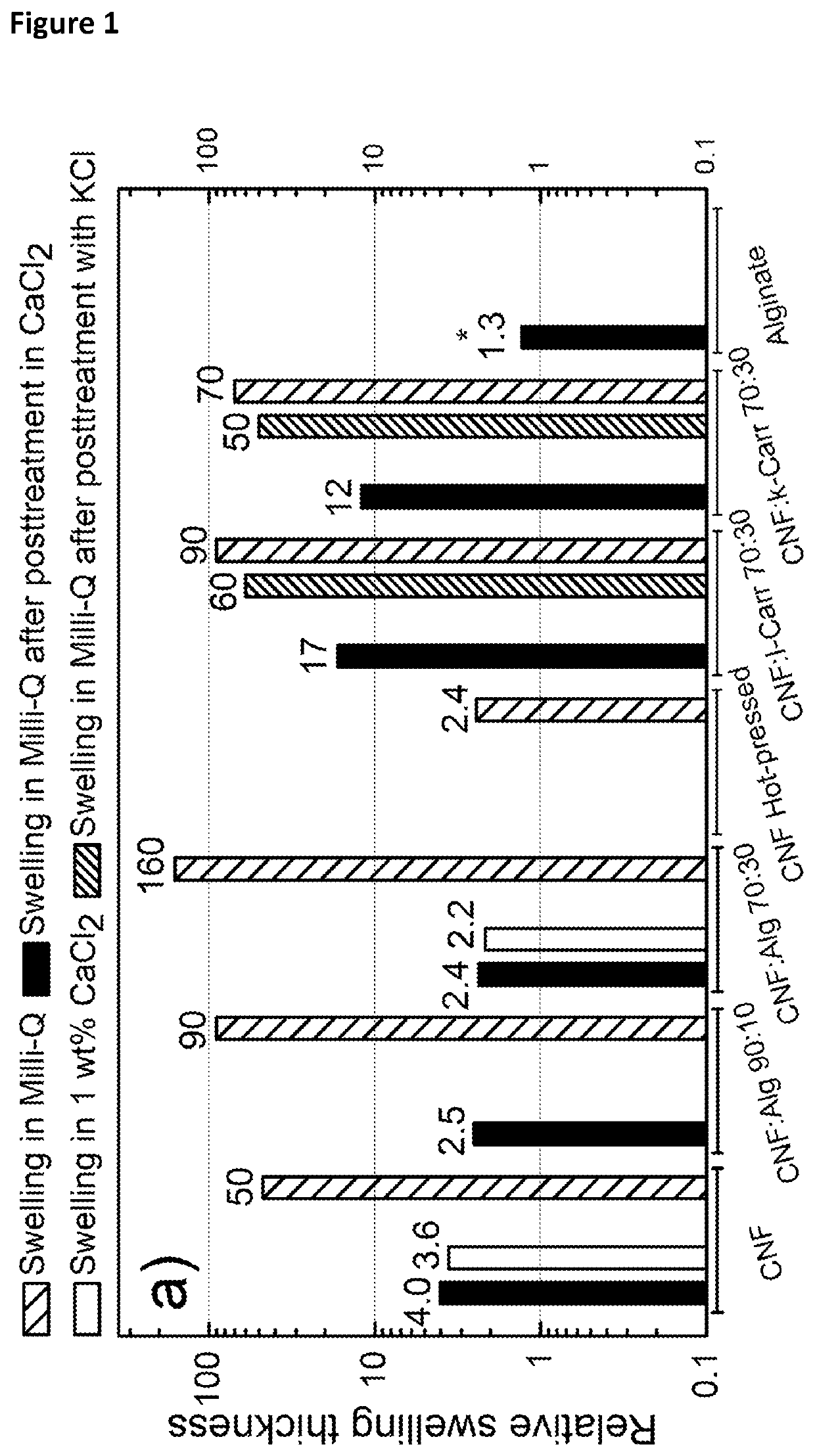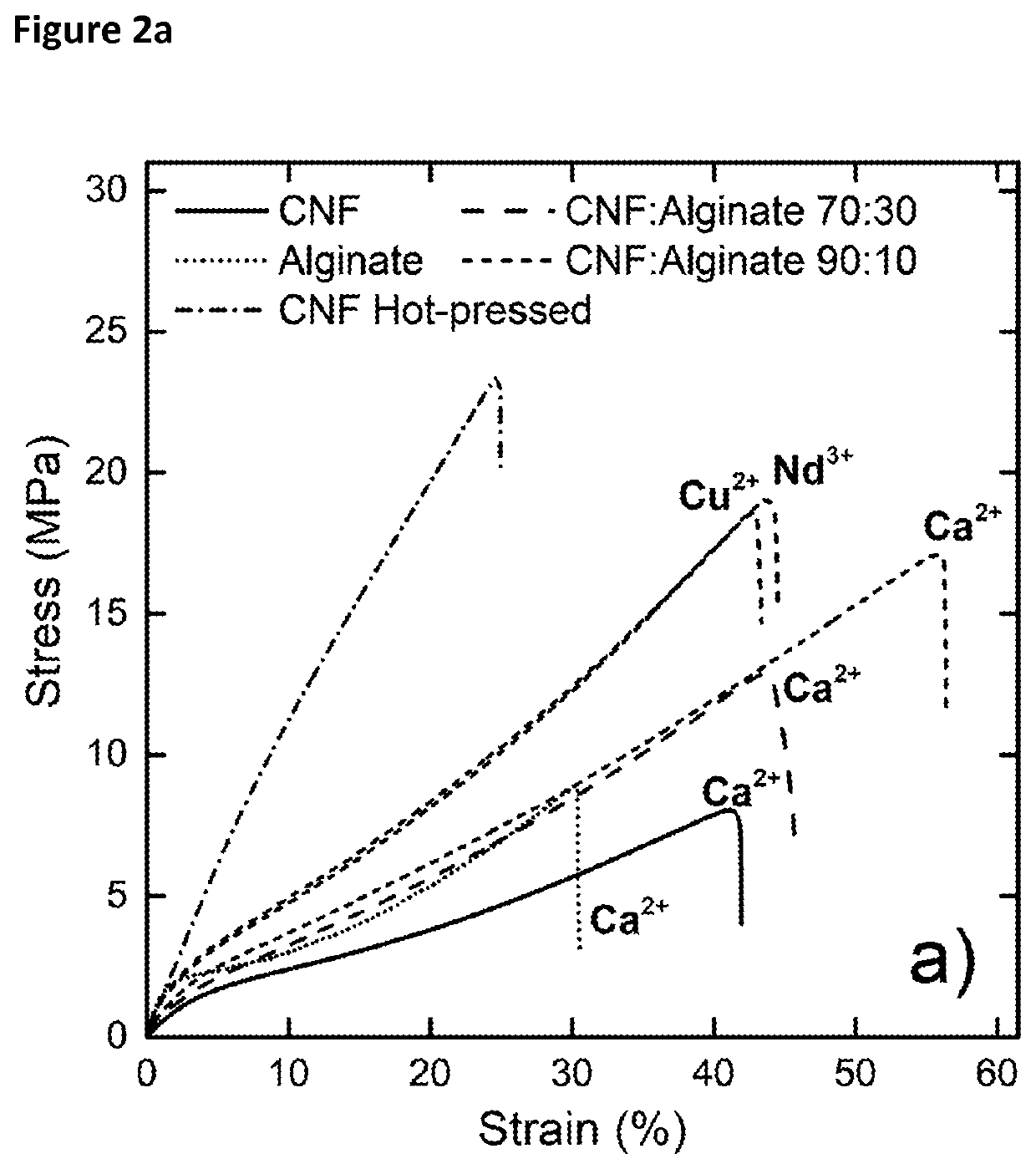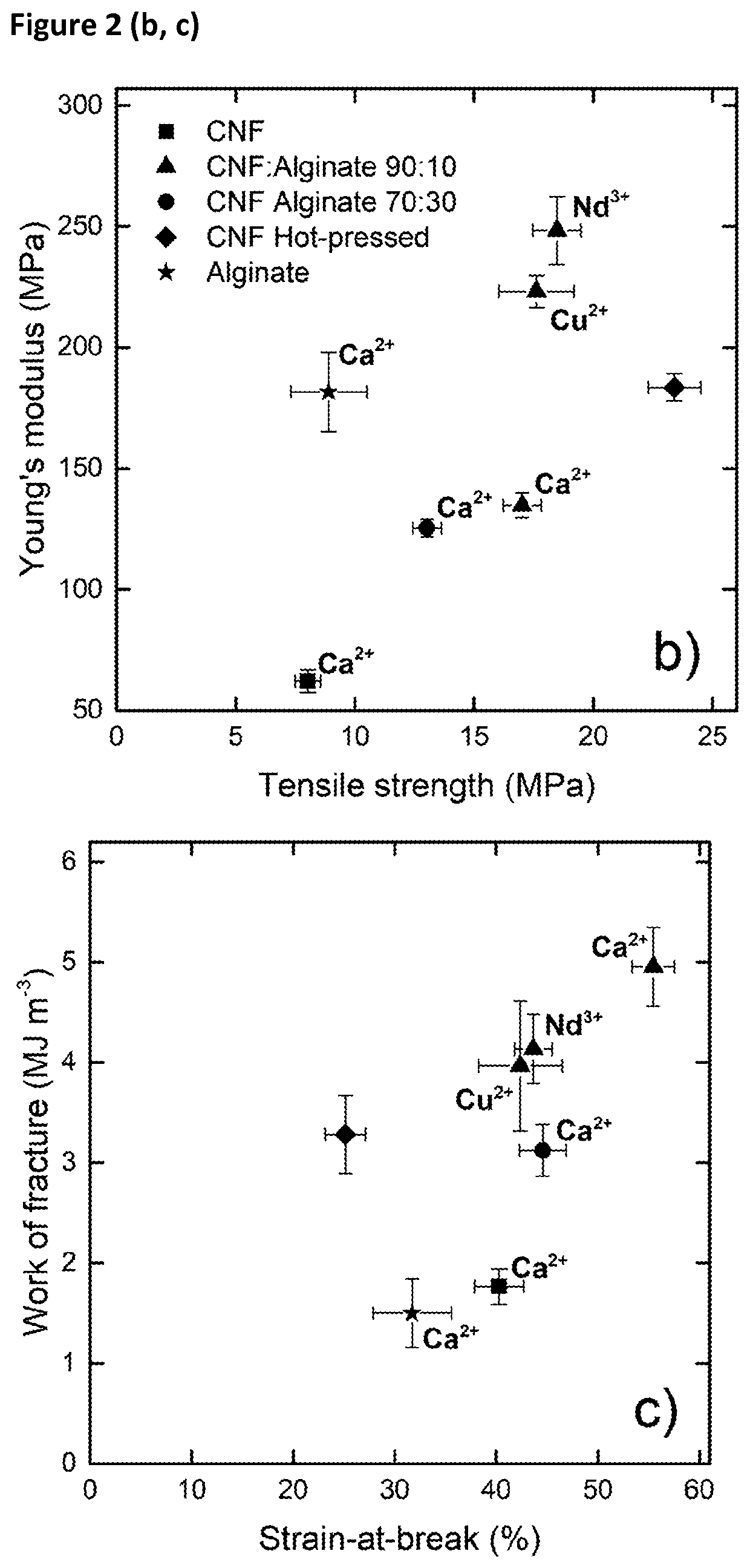Biocomposite material comprising cnf and an anionic gelling polysaccharide
- Summary
- Abstract
- Description
- Claims
- Application Information
AI Technical Summary
Benefits of technology
Problems solved by technology
Method used
Image
Examples
example 1
Comparison of Materials Prepared from Different Compositions Materials
[0049]CNF Preparation
[0050]A 2 wt % CNF gel was kindly provided by RISE bioeconomy (former Innventia), Stockholm, Sweden. The CNF was derived from a dissolving grade pulp that had been carboxymethylated to a charge density between 500-600 μmol / g prior to the defibrillation. The gel was further homogenised using a microfluidizer by three passes through a serial 200-100 chamber configuration, diluted to a dry content of 0.2 wt % at a volume of 900 mL, and dispersed using ultra-turrax at 13000 rpm for 20 minutes. The gel was centrifuged at 4100×g for 1 h to remove larger aggregates or flocs.
[0051]The dimensions of the fibrils were determined with atomic force microscopy (AFM) by adsorbing CNF for 1 min from a 0.001 wt % dispersion onto plasma treated silicon wafers (boron-doped, p-type, 610-640 μm) already covered with a polyvinyl amine anchoring-layer (Lupamin 9095, BASF) that was adsorbed from a 0.1 g / L solution at...
example2
Importance of the Interpenetrating Networks Formed with Different Treatments
[0085]Materials
[0086]CNF:alginate materials were prepared following two different routes in order to evaluate the importance of the interpenetrating networks. In the first one the alginate network was formed while the CNF was in a swollen state (with a lot of voids between physically locked fibrils) and in the other, the alginate network was formed while the CNF was dry, i.e. in a collapsed state. The first material was crosslinked by introducing calcium ions to the never-dried CNF:alginate filter cake in its swollen state in Milli-Q water, and the second material was crosslinked by first drying the CNF:alginate film, to collapse the structure and reduce the amount of voids between the fibrils, before introducing calcium ions. Reference samples of CNF films treated with calcium ions when the film was dry, and in a swollen state, respectively, were also prepared. The tensile mechanical properties in the wet s...
example 3
Comparison Different CNF:Alginate Ratios Materials
[0101]Films of CNF:alginate composites crosslinked with calcium ions and with ratios 90:10, 50:50 and 10:90 parts per weight of CNF to alginate, were prepared in order to investigate the influence of the CNF:alginate ratio on the mechanical properties in wet state of the composite materials (FIG. 12).
[0102]Preparation of CNF:Alginate 90:10 Ca2+ Composite Films:
[0103]The films were prepared as described in Example 1.
[0104]Preparation of CNF Ca2+ Nanopaper:
[0105]The reference nanopaper was prepared as described in Example 1.
[0106]Preparation of CNF:Alginate 50:50 and 10:90 Films Crosslinked with Ca2+:
[0107]A 0.2 wt % dispersion CNF was mixed with a ˜0.4 wt % alginate solution at various CNF:alginate ratios (50:50 and 10:90). The dispersion (700 mg dry weight) was mixed using an ultra-turrax for 9 min at 9000 rpm, degassed and then solvent casted in PTFE cups with a diameter of 9.5 cm. The solvent casting took around 2 weeks until the f...
PUM
| Property | Measurement | Unit |
|---|---|---|
| Temperature | aaaaa | aaaaa |
| Time | aaaaa | aaaaa |
| Thickness | aaaaa | aaaaa |
Abstract
Description
Claims
Application Information
 Login to View More
Login to View More - R&D
- Intellectual Property
- Life Sciences
- Materials
- Tech Scout
- Unparalleled Data Quality
- Higher Quality Content
- 60% Fewer Hallucinations
Browse by: Latest US Patents, China's latest patents, Technical Efficacy Thesaurus, Application Domain, Technology Topic, Popular Technical Reports.
© 2025 PatSnap. All rights reserved.Legal|Privacy policy|Modern Slavery Act Transparency Statement|Sitemap|About US| Contact US: help@patsnap.com



